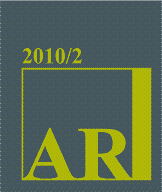Prednosti pasivne hiše
The advantages of passive houses
Author(s): Martina Zbašnik-Senegačnik, Andrej SenegačnikSubject(s): Architecture
Published by: Fakulteta za arhitekturo, Univerza v Ljubljani
Keywords: passive house; energy-saving; ventilation; air quality
Summary/Abstract: The passive house is currently an optimal energy-saving building. Because of quality thermal cladding, adequate air-tightness and a built-in controlled ventilation system recovering the heat from waste air, its annual heating energy demand amounts to a maximum of 15 kWh/(m2a), which can be met by so-called warm air heating. A passive house has numerous advantages over the structures in which we live today. Apart from low energy consumption (and, consequently, reduced dependence on fossil fuels), and low maintenance costs, its advantage lies primarily in permanently fresh, warm and clean air. Thanks to relatively large glazed surfaces, the passive house also offers the great comfort of illumination. The article argues for the advantages of the passive house, using calculations, measurements and research results from other authors.
Journal: AR Arhitektura, raziskave
- Issue Year: 2010
- Issue No: 2
- Page Range: 41-46
- Page Count: 6
- Language: Slovenian

